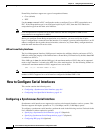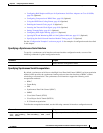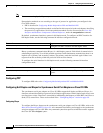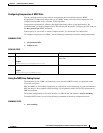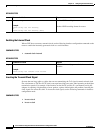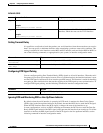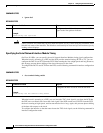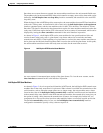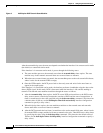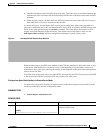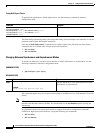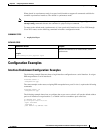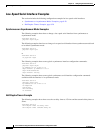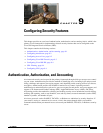
8-14
Cisco 819 Series Integrated Services Routers Software Configuration Guide
OL-23590-02
Chapter 8 Configuring the Serial Interface
How to Configure Serial Interfaces
Configuring Low-Speed Serial Interfaces
This section describes how to configure low-speed serial interfaces and contains the following sections:
• Understanding Half-Duplex DTE and DCE State Machines, page 8-14
• Changing Between Synchronous and Asynchronous Modes, page 8-18
For configuration examples, see the “Low-Speed Serial Interface: Examples” section on page 8-20.
Understanding Half-Duplex DTE and DCE State Machines
The following sections describe the communication between half-duplex DTE transmit and receive state
machines and half-duplex DCE transmit and receive state machines.
Half-Duplex DTE State Machines
As shown in Figure 3, the half-duplex DTE transmit state machine for low-speed interfaces remains in
the ready state when it is quiescent. When a frame is available for transmission, the state machine enters
the transmit delay state and waits for a time period, which is defined by the half-duplex timer
transmit-delay command. The default is 0 milliseconds. Transmission delays are used for debugging
half-duplex links and assisting lower-speed receivers that cannot process back-to-back frames.
Figure 3 Half-Duplex DTE Transmit State Machine
After idling for a defined number of milliseconds (ms), the state machine asserts a request to send (RTS)
signal and changes to the wait-clear-to-send (CTS) state for the DCE to assert CTS. A timeout timer with
a value set by the half-duplex timer rts-timeout command starts. The default is 3 ms. If the timeout
timer expires before CTS is asserted, the state machine returns to the ready state and deasserts RTS. If
CTS is asserted before the timer expires, the state machine enters the transmit state and sends the frames.



